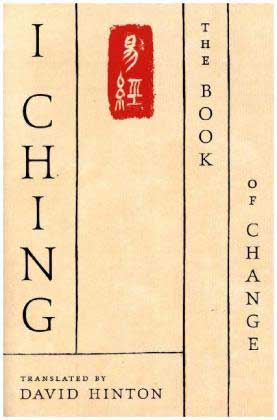I Ching – The Book of Change
Translation by David Hinton
- ISBN: 9780374220907
- 2015, 160 pages
20,00 €
incl. VAT
plus shipping costs
Depending on the delivery address VAT may vary at checkout.
Delivery time: ca. 1 - 3 Tage
Description
Taken from the introduction:
Primal emptiness separated into heaven and earth. That’s how it all began.
Before long, a pair of dragons emerged from Bright-Prosperity Mountain: Root-Breath and Lady She-Voice. Now, dragons in ancient China embodied the awesome force of change. A dragon was in constant transformation, writhing through all creation and all destruction, shaping itself into the ten thousand things tumbling through their traceless transformations. So perhaps the appearance of these dragons was the beginning of the ever-changing diversity of things we know as the Cosmos. The legend doesn’t say. Root-Breath and Lady She-Voice were dragons, but dragons with human heads. They became the first couple, husband and wife, and Lady She-Voice gave birth to humankind. So you see, we are descended from dragons: we have dragon hearts pumping dragon blood, dragon minds thinking dragon thoughts. It was Root-Breath, our first-ancestor, who created the hexagrams. More dragon than human, his thoughts were almost indistinguishable from natural process itself, so when he shaped them into the hexagrams, those strange dragon-graphs expressed all phenomena in the endless process of change. Language is how we represent change, reality in its dynamic process of transformation. And it grows out of change. Hexagrams are the first stage in that emergence of language from change, that folding of the Cosmos around onto itself to name and describe itself. They are the most ancient form of language in this sense. Part dragon language, part human, they represent the movement of change at a more fundamental level than our languages can. Root-Breath’s hexagrams were made up of six lines, each of which could be either a solid yang (male) line (-) or a divided yin (female) line (- -), thereby representing the two complementary cosmic principles whose dynamic interaction produces the process of change. And these lines were alive. Like dragons and the Cosmos itself, the hexagram lines were in constant transformation-yang becoming yin, and yin, yang-creating different hexagrams, each of which is defined by its particular configuration of yang and yin. So there are sixty-four hexagrams-every possible six-line combination of yang and yin lines-and these combinations describe every possible configuration in the process of change.
The sixty-four hexagrams make up the actual text of the I Ching:I (Change) + Ching (Classic) = The Classic of Change or The Book of Change.
The Book of Change and change itself: they emerged together at the beginning of things
Author


